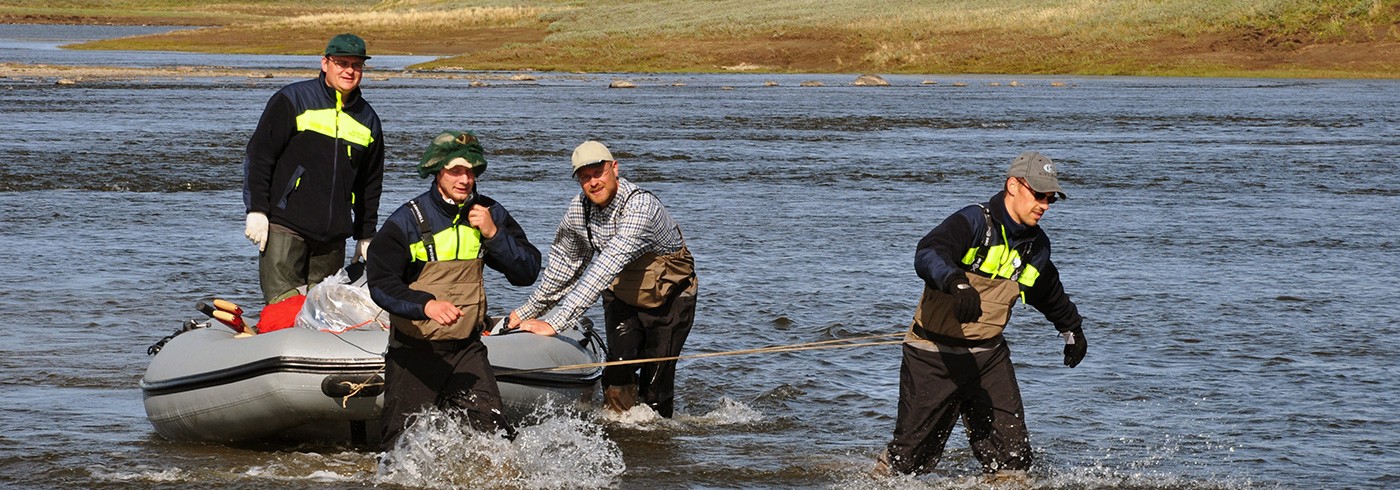
The beautiful flowering tundra. Photo: Per Möller

Last Thursday we moved downstream to our second base camp in our three zodiacs. Photo: Per Möller
The second, and the first real field work week is at end. We have experienced very different weather conditions; from unexpected warm weather in the beginning of the week with temperature peaking at 22°, more or less forcing us to take a swim in the river, to this morning with fog lying close to the ground and temperature at only 5°.
Our work from base camp one was finished last Wednesday, and both geology and fishing was excellent; arctic grayling was plentiful in the small stream behind our camp and did bite on most everything. So, last Thursday we moved downstream to our second base camp in our three zodiacs.

Red-breasted geese with newly hatched off-spring. Photo: Per Möller
In straight line it was 22 km, but the river is swinging in large meanders, so in reality we covered some 30 km and it took us close to 8 hours to reach the new base camp. We had some doubt if all our stuff would fit into our boats when we saw the pile of boxes and waterproof bags on the river side, but it turned out to be quite ok, though not much space was left for our self in the zodiacs.
To tear down camp in sometimes heavy rain was not so pleasant, but once on our way the skies cleared and developed into a very nice day and with the wind in our rear. Red-breasted gees with newly hatched off-spring, often 4–6 paddling feverishly after their parents, were plentiful in large flocks on the river, and over us dived pellegrin falcons at a number of occasions when we came to close to their nests on the river bluffs.
However, it was quite a strain-full journey downstream. Most of the way the river was deep enough, but it does not take many sand banks or small rapids with a lot of large stones, meaning jumping off the zodiacs and hauling them (zodiac and load some 600–700 kilos) over these stretches when we got grounded, to feel it everywhere in your body.

Love Dalén and Kenneth Andersen with remains of a mammoth. Photo: Per Möller
It was a late dinner at around 11 am after camp was set up. After three days work here, with a lot off digging in the sediments exposed in the river bluffs, we are quite content. We suspect that we have identified two different sediment units that indicate that the area twice in previous time (meaning some 130 to 70 thousands of years ago) was invaded by the sea – we see this from the nature of the sediments and their content of marine molluscs. We have also identified sediments deposited during quite recent time (for a geologist) full of remains of the mega fauna that roamed the “mammoth steppe” some 40–10 thousand years ago. Today’s “largest” find was an 80 cm long mammoth tusk.

Per Möller is identifying sediment units.
Tomorrow (i.e., our Monday) we will move to base camp 3 around 45 km downstream. However, the river will meander for this stretch even more, meaning that when followed a full meander after 4–6 km, you are sometimes only a few hundreds of metres further downstream. It will be a long day…
Per Möller, Lunds universitet







